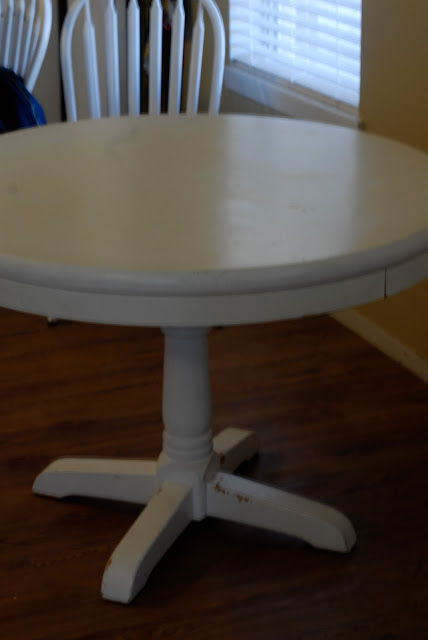Furniture First Aid: Cleaning and Stripping
This part of the refinishing task has to be my least favorite. It used to be sanding but now that I have a super duper sander, I actually "enjoy" sanding and feeling a little like I know how to use a power tool!
After you find your victim--perhaps screaming alongside the road or falling over at a thrift store--there needs be a little cleaning up and perhaps some paint stripping if there are just too many layers of strange paint.
Cleaning. Pretty straight forward. I usually do this part outside by taking a damp cloth (you don't want to submerge the victim!) and wiping it down. I've heard that Clorox wipes work great too!
Stripping. I would only recommend stripping if it absolutely necessary! Frankly, it's just too much work if it's not.
Here's what I know--a few ground rules that I adhere to:
1. Go outside or where you have lots of fresh and breathable air. No matter how "environmentally friendly" a product is...you've gotta wonder how much you should breath it in when it's eating through paint. Plus, you don't want your whole house smelling like paint stripper!
2. Wear gloves. Just do it. I've used gardening gloves and they've done the trick. Latex or rubber would work too!
3. Get a decent scraper. I have two different kinds (one that looks like a ice scraper and one that looks like a spatula...). I've found it handy to have a variety!
4. Place a piece of plastic underneath the piece so that it cleans up nicely and you can dispose of the scrapings responsibly!
5. Buy a cheap brush. Any brush that you use to apply the stripper will probably be useless after using it so don't bother to spend much money on it. I wouldn't recommend a foam brush since the stripper tends to eat through it.
6. If it's old, check to make sure it's not lead paint. It's important that you take some extra precaucions with lead paint!
6. If it's old, check to make sure it's not lead paint. It's important that you take some extra precaucions with lead paint!
Remember my white table?
Here are my steps:
1. Give the piece a good lathering. Don't be afraid to be liberal!
2. Wait. Wait. Be patient. I usually give it about thirty minutes or eyeball it to see if the paint is bubbling up a bit.
3. Here's the "fun" part. Start scraping and peeling. With this particular table, I realized that it had a few good layers on it. Unfortunately, this meant that I would be spending a lot of time scraping away. I did discover that it is far better to scrape away what I could and then apply more stripper verses trying to scrape at layers that the stripper hadn't soaked to.
4. Be patient again. Persevere. At this point, I had probably spent at least thirty minutes scraping away and I realized that this was going to take a LOOOONNNNNGGG time. I probably spent over three hours just striping the tops of this piece. Let me tell you--stripping is not for the weak of heart!
My product choices? Well, in the past, I had only used Citristrip. I liked that it didn't have a strong chemical smell, stuck to the surfaces easily, and seemed to work well. Cons: It still burns if it gets on your skin and the residue is hard to clean up.
This time I decided to give Citristrip a contender: Lift Off. Unlike Citristrip which is a bit gooey, Lift Off was more like laundry detergent. In this case, that worked fine because I was working on a flat, horizontal surface. If you are working with a vertical surface, I think it might be a little trickier. I did like how it was easy to spread around, though.
Who won?
In the end, I think that the Citristrip worked better and I will definitely buy it again over Lift Off. Does anyone want to weigh in on some other paint strippers that they thought worked well? I've only used these two strippers. I'd love any input!
Stay tuned for the table's progress and another installment in Furniture First Aid!








Comments
Post a Comment